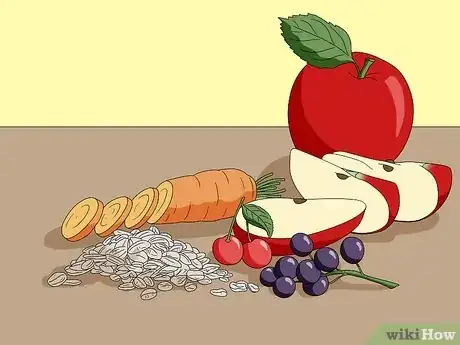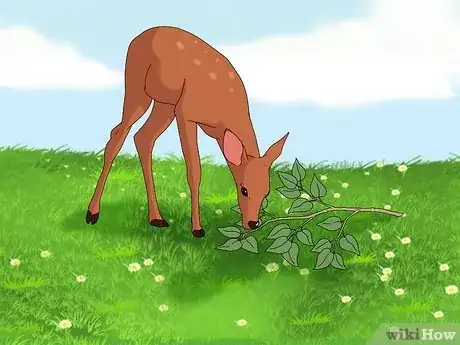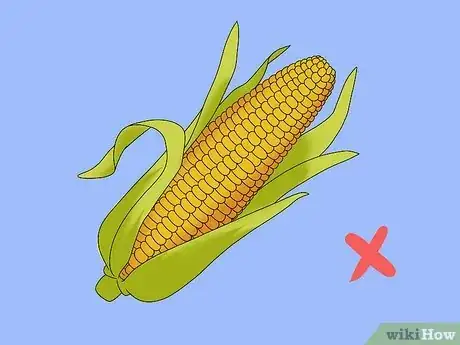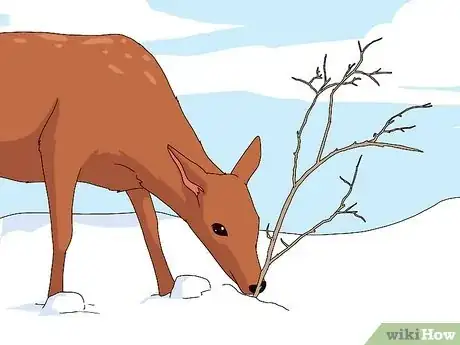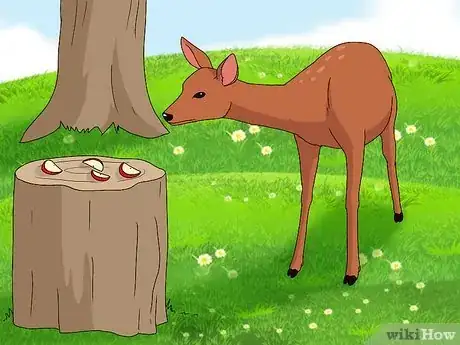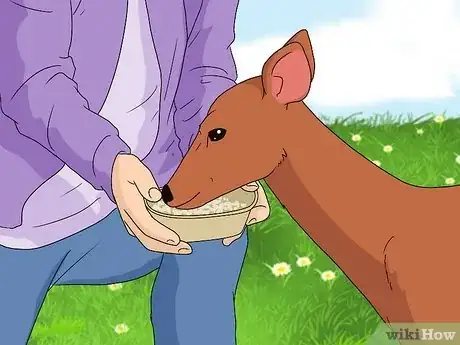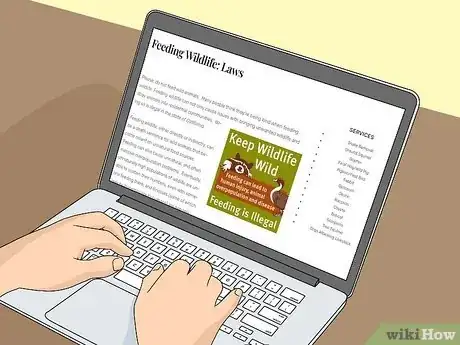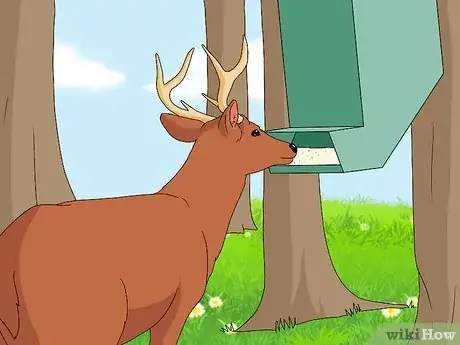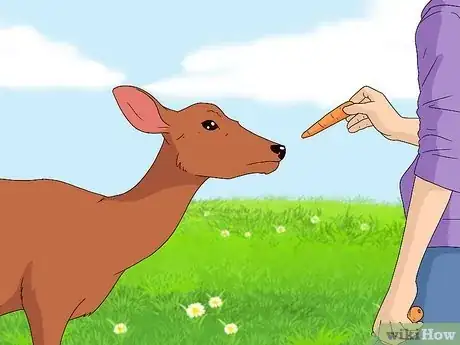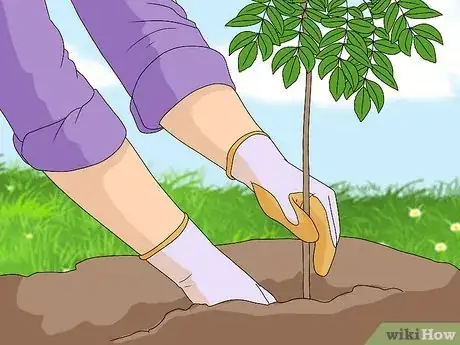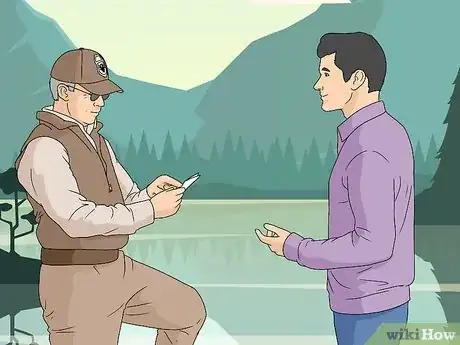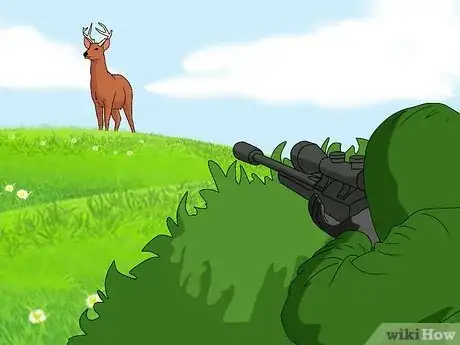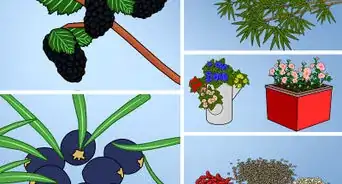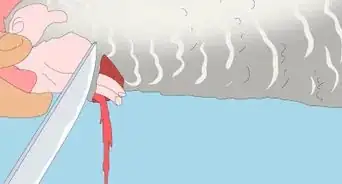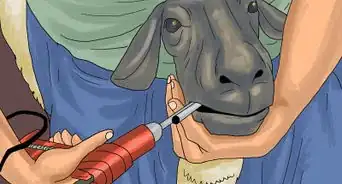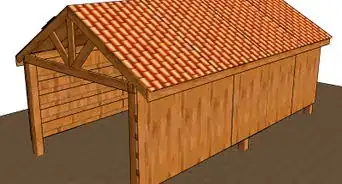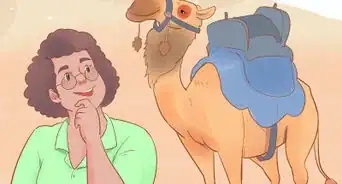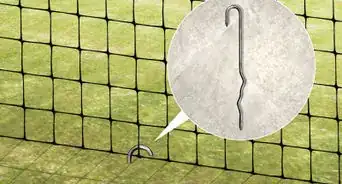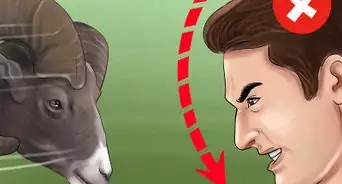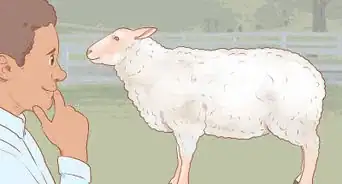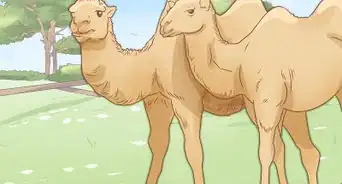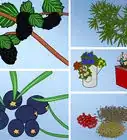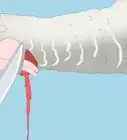This article was co-authored by wikiHow staff writer, Amber Crain. Amber Crain has been a member of wikiHow’s writing staff for the last six years. She graduated from the University of Houston where she majored in Classical Studies and minored in Painting. Before coming to wikiHow, she worked in a variety of industries including marketing, education, and music journalism. She's been a radio DJ for 10+ years and currently DJs a biweekly music program on the award-winning internet radio station DKFM. Her work at wikiHow supports her lifelong passion for learning and her belief that knowledge belongs to anyone who desires to seek it.
There are 11 references cited in this article, which can be found at the bottom of the page.
wikiHow marks an article as reader-approved once it receives enough positive feedback. This article received 41 testimonials and 83% of readers who voted found it helpful, earning it our reader-approved status.
This article has been viewed 525,652 times.
Learn more...
If you've spotted white-tailed deer on or near your property, you might be interested in providing food for them (especially during the long, harsh winter months). But what exactly do deer eat? Is it safe to feed them? In this article, we'll cover the ideal foods for deer to munch on, what foods are harmful, and the best times (and ways) to feed your local deer. If you're ready to get started, scroll on down!
Things You Should Know
- Feed deer specially formulated deer food mixes for an easy option. Supplement feed mixes with fresh produce and oats.
- Stick to feeding deer in the harsh winter months when their natural food sources become scarce. Feed them consistently since they may come to rely on you.
- The best long-term way to feed deer is to improve their habitat so they have readily available food sources year-round. Plant trees, shrubs, and herbs for local deer.
Steps
What to Feed Deer
-
1Go with formulated deer food mixes for an easy option. These mixes can typically be found at feed mills or pet supply stores. Deer feed mixes are usually a mix of alfalfa, oats, soybeans, molasses, and several vitamins and minerals. This type of food is easy for deer to digest, making it ideal for feeding.
-
2Supplement deer food mixes with oats and fresh produce. If formulated deer food mixtures are unavailable, oats are the next best supplemental food for deer. Oats provide deer with a healthy mixture of fiber and carbohydrates without disrupting their digestive system.Advertisement
-
3Cut down tree branches to feed deer for a cheap and safe option. In nature, deer eat twigs and other natural forest vegetation. To provide them with more of their natural food source, cut down branches that are out of their reach. This is one of the safest and most natural ways to keep deer fed throughout the year.[3]
- White tailed deer prefer the following trees/shrubs: white cedar, birches, aspens, American yew, hemlock, maples, ash, white pine, mountain ash, scarlet elder, sumac, witch-hobble, and high bush cranberry.
- Avoid beech, balsam fir, spruces, and larch (these are unpalatable, indigestible, or both).[4]
- Scatter cut limbs in areas where you've spotted deer before (or put limbs in areas where you'd like to attract deer).
-
4Do not feed deer a corn diet. A deer's digestive system is complex, and corn happens to be one of the worst types of food for them. Unfortunately, many deer end up extremely sick or dead because animal lovers believe that corn is good for deer. When deer are offered a sudden supply of corn, they aren't able to adjust to the high carbohydrate diet, and they end up dying.[5]
- Since deer typically eat woody vegetation found in forests, don't feed them foods that are rich in fats and carbohydrates.
When to Feed Deer
-
1Feed deer during the winter months. Since deer's natural food source is made up from woody vegetation, it becomes harder for them to find food during the winter. This is the reason many people choose to feed deer. If you decide to feed deer during the winter months, be careful to feed them the proper types of food and slowly introduce it into their diets.[6]
- Twigs, buds, and leaves of woody plants such as elms, honeysuckle, raspberry, black cherry, basswood, grape, and hawthorn are great choices. Leaf buds and evergreen leaves are especially important during winter in northern states.[7]
-
2Introduce new food to deer slowly so their systems can adjust. It takes deer 2-4 weeks to adjust to a new diet, so start feeding them any new foods gradually. Slowly introduce new types of food by combining them with their natural diet of woody vegetation.[8]
-
3Feed local deer consistently rather than sporadically. When deer are fed by humans, they can easily become dependent and stop foraging for food naturally. If you feed deer and then suddenly stop (even if you've simply run out of food temporarily), the deer may go hungry, start bothering you for more food, or become aggressive.[9]
- Once spring comes, wean deer off of supplemental food so that they can begin foraging for food on their own again.[10]
- Keep in mind that year-round supplemental feeding is very controversial because it can be unsafe for deer and spread disease. Many wildlife organizations urge people not to do it and some states have made it illegal.[11]
Where to Feed Deer
-
1Make sure it's legal to feed wild animals in your area or state. Feeding wildlife is often regulated by local laws and wildlife commissions, and laws vary from state to state. Some states allow feeding between certain dates and prohibit it between other dates. Others have laws that dictate how much you're allowed to feed deer.[12]
- Many states have outlawed feeding deer altogether, so it's important to check.[13]
- To find out your local laws, check government wildlife and forest websites for your state.
-
2Set up deer feeders or troughs in your yard or on your property. Put the feeders or troughs as far away from your home as possible since close proximity can result in property damage. Keep feeders or troughs full at all times in the winter, or stick to a set feeding time each day.[14]
-
3Find a legal and public location where you can feed deer. Many local wildlife organizations set up feeding sites for deer – these are public places where deer can come to feed. Bringing food to these sites helps feed deer without you having to take on full responsibility of feeding local white-tails.[17]
- These organizations know the proper times to feed deer and the right amount of food to give them.
Improving the Natural Habitat
-
1Plant trees and fresh produce to provide natural food sources for deer. This is a more natural way to feed deer and reduces the amount of daily feeding maintenance for you. Planting trees also helps the environment in general (which is always a nice bonus).[18]
- Plant fruit trees (like apple trees), maple trees, or aspen trees on your property if you want to provide natural resources for deer.
-
2Get involved with your local wildlife agency. Getting involved with your local wildlife agency will allow you to help deer and other local wildlife the best way possible. Dealing with professionals is a great way to make a difference and actually help wild animals in the long-term. Contact your state wildlife agency or conservation organizations for more information.[19]
-
3Allow deer hunters on your land if your area is overpopulated. If you live on hunt-able land, allow hunters to use your land during hunting season. Many rural areas are overpopulated with deer, which is why they face food shortages. Hunting keeps deer populations in balance with their available habitat, and minimizes the negative impacts on deer habitat, farmers, residents, and motorists.[20]
Community Q&A
-
QuestionCan I feed deer the vegetable peelings that I would normally put in my compost pile? Or vegetables such as tomatoes, celery, spinach or bell peppers that are past their prime?
 wikiHow Staff EditorThis answer was written by one of our trained team of researchers who validated it for accuracy and comprehensiveness.
wikiHow Staff EditorThis answer was written by one of our trained team of researchers who validated it for accuracy and comprehensiveness.
Staff Answer wikiHow Staff EditorStaff AnswerDeer enjoy eating most kinds of fresh produce and it's also safe for deer to eat fresh produce (including rinds).
wikiHow Staff EditorStaff AnswerDeer enjoy eating most kinds of fresh produce and it's also safe for deer to eat fresh produce (including rinds). -
QuestionCan you feed deer sweet feed that they sell for cows or horses? What kind of oats and where can you buy it in bulk?
 wikiHow Staff EditorThis answer was written by one of our trained team of researchers who validated it for accuracy and comprehensiveness.
wikiHow Staff EditorThis answer was written by one of our trained team of researchers who validated it for accuracy and comprehensiveness.
Staff Answer wikiHow Staff EditorStaff AnswerDon't feed deer sweet feed meant for cows and horses; they have a specific diet and giving them food outside of that can do more harm than good. You can usually buy oats in bulk at feed supply stores.
wikiHow Staff EditorStaff AnswerDon't feed deer sweet feed meant for cows and horses; they have a specific diet and giving them food outside of that can do more harm than good. You can usually buy oats in bulk at feed supply stores. -
QuestionShould the oats be wet or dry?
 wikiHow Staff EditorThis answer was written by one of our trained team of researchers who validated it for accuracy and comprehensiveness.
wikiHow Staff EditorThis answer was written by one of our trained team of researchers who validated it for accuracy and comprehensiveness.
Staff Answer wikiHow Staff EditorStaff AnswerDry oats are just fine for deer. You don't need to get oats wet before putting them out for the deer.
wikiHow Staff EditorStaff AnswerDry oats are just fine for deer. You don't need to get oats wet before putting them out for the deer.
Warnings
- Training deer to lose their fear of humans can expose them to danger.⧼thumbs_response⧽
- Feeding deer can be detrimental to their natural instincts and can create unnatural and harmful environments. Talk to your local wildlife organization before deciding to feed deer.⧼thumbs_response⧽
- Deer often carry deer ticks that cause Lyme disease. Always check yourself thoroughly for ticks after visiting an area deer frequent.⧼thumbs_response⧽
References
- ↑ https://www.esf.edu/aec/adks/mammals/wtd.htm
- ↑ https://deer.wildlifeillinois.org/deer-ecology/food-habits/
- ↑ https://deer.wildlifeillinois.org/deer-ecology/food-habits/
- ↑ https://www.esf.edu/aec/adks/mammals/wtd.htm
- ↑ http://www.farmanddairy.com/columns/feeding-corn-to-deer-could-be-death-sentence/14324.html
- ↑ https://extension.missouri.edu/publications/g9487
- ↑ https://www.msudeer.msstate.edu/deer-diet.php
- ↑ https://wdfw.wa.gov/species-habitats/living/wildlife-feeding
- ↑ https://novascotia.ca/natr/wildlife/conserva/feed-deer.asp
- ↑ http://www.in.gov/dnr/fishwild/files/fw-feeding_deer.pdf
- ↑ https://wdfw.wa.gov/species-habitats/living/wildlife-feeding
- ↑ http://shockeffectwhitetail.com/state-laws/
- ↑ https://deer.wildlifeillinois.org/deer-ecology/food-habits/
- ↑ https://novascotia.ca/natr/wildlife/conserva/feed-deer.asp
- ↑ https://www.esf.edu/aec/adks/mammals/wtd.htm
- ↑ https://extension.unh.edu/resource/more-harm-good-why-you-shouldnt-feed-deer
- ↑ https://novascotia.ca/natr/wildlife/conserva/feed-deer.asp
- ↑ https://extension.unh.edu/resource/more-harm-good-why-you-shouldnt-feed-deer
- ↑ https://vet.tufts.edu/tufts-wildlife-clinic/resource-library/dont-feed-deer-winter-heres-why
- ↑ https://extension.unh.edu/resource/more-harm-good-why-you-shouldnt-feed-deer
About This Article
To feed deer, gradually introduce new foods to their diet along with foods that they'd normally eat in the wild so they don't get sick. For example, you could start by feeding the deer that visit your yard branches and woody vegetation. Then, slowly introduce other foods, like oats, fruits, vegetables, and acorns. You can also purchase specially formulated deer food mixes that are great for deer. Just make sure you get the deer used to their new diet before winter since that's when their natural food supply will decrease. To learn how to set up a feeding area to attract deer to your yard, scroll down!

